Exploring the Mithraeum of Roman London
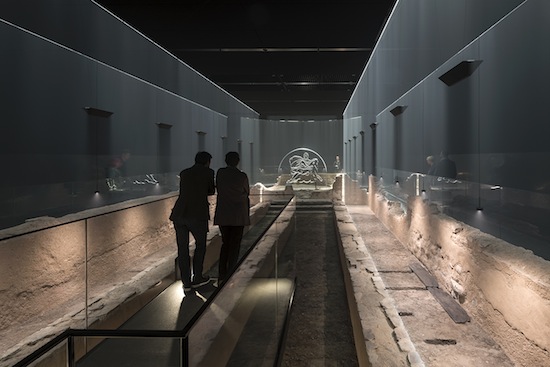
A glass walkway allows you to get inside the temple without touching
it. You are then treated to a rather cheesy sound and light show.
London is a massive city with 2,000 years of history behind it. It’s hard to tell these days, but the banking and financial center of it all, with its frantic building, insider wheeling and dealing, and massive cocaine consumption, is actually the oldest neighborhood. This center of commerce is called “the City”, and its area corresponds to the Roman city of Londinium, founded around 43 AD.
Not much has survived the centuries, just a section of the original city wall and a few traces in the cellars of later buildings. In 1954, however, a subterranean temple was found that belongs to one of the ancient empire’s foremost mystery religions — Mithraism. Little is known for certain about this religion since its rites were private and most written accounts are by early Christians seeking to destroy the faith.
The cult centered around worship of the god Mithras, who originated in Persia. One common scene in Mithraic iconography shows Mithras being born out of a rock, and this may be why his temple, called a mithraeum, is generally located underground. It was a secretive religion that only accepted men, and this is one of the reasons it eventually lost out to the more inclusive Christianity.
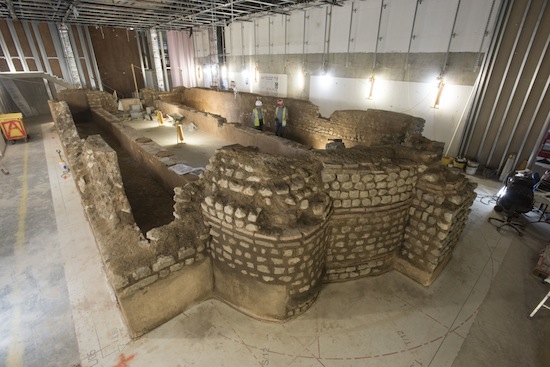
A closeup of the apse portion of the mithraeum
More than a hundred mithraea have been found from Scotland to Syria. Some are quite well preserved and still have their original decorations. The example in London has lost most of this, its upper portion having been destroyed by later construction. But the entire floor plan can still be seen. Traces of other buildings suggest that the mithraeum was located in the back garden of a private house.
An inscription suggests that the temple was built in the 3rd century AD, possibly by an army veteran named Ulpius Silvanus. The temple is larger than most mithraea, measuring 18×8 meters. In plan it looks much like a basilica, with a central nave and two colonnaded side aisles that could accommodate about 30 people. This is where the initiates could recline while sharing the sacred banquet that was an integral part of the ceremony. There are seven columns to either side, perhaps representing the seven grades of initiation. A rounded apse at one end would have featured a statue of Mithras slaying a bull and thus bringing life to the world. Only the head survives.
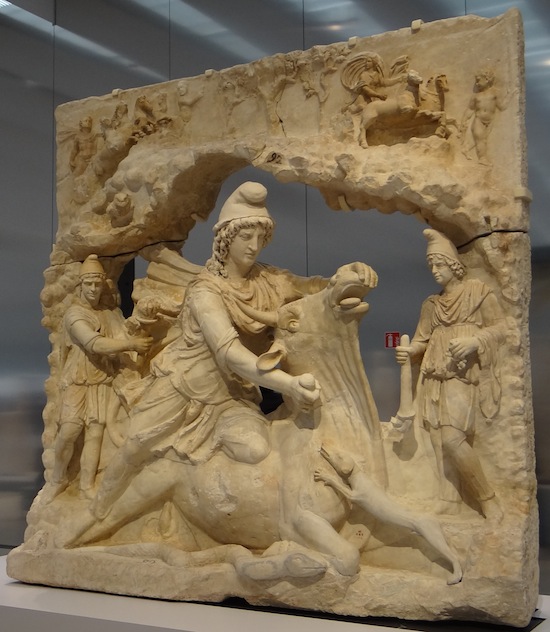
Statue of Mithras sacrificing the bull, c. 150 AD, now in the Louvre.
Photo courtesy Serge Ottaviani via Wikimedia Commons.
![BZY10 [4456]](https://www.blackgate.com/wp-content/uploads/2018/09/Section-of-Roman-timber-door-c-MOLA.jpg)
Section of a Roman timber door, most likely
the one that was in the entrance to the mithraeum
It’s the most complete Roman building ever found in London. Since it was in the way of some new construction, the temple was shifted to the corner of Queen and Queen Victoria Streets and reassembled there. The reconstruction was not perfect and scholars criticized several inaccuracies that had crept into the work. It stood there for half a century, at ground level, before being moved back to its original location under what is now the European headquarters for Bloomberg.
The temple is once again at its original level, and thus visitors have to walk downstairs, well below the current street level, in order to see it. The current street level at Bloomberg’s European headquarters is 7 meters above the 3rd century Roman occupation layer.
The center also displays a large collection of Roman artifacts. The waterlogged conditions of the area meant that many perishable materials such as wood and leather have survived.
All photos (c) MOLA (Museum of London Archaeology) unless otherwise noted. Scroll down for more!
Sean McLachlan is the author of the historical fantasy novel A Fine Likeness, set in Civil War Missouri, and several other titles. Find out more about him on his blog and Amazon author’s page. His latest book, The Case of the Purloined Pyramid, is a neo-pulp detective novel set in Cairo in 1919.
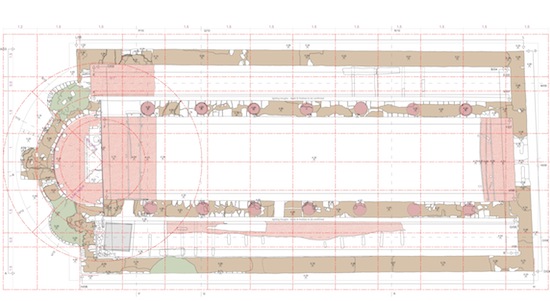
Floor plan of the mithreaeum
![BZY10 [332]](https://www.blackgate.com/wp-content/uploads/2018/09/Roman-pottery-sherd-c-MOLA.jpg)
Decorated Roman pottery shard
![BZY10[3495]height 27mm](https://www.blackgate.com/wp-content/uploads/2018/09/Roman-Mercury-god-steel-yard-weight-c-MOLA.jpg)
Steelyard weight in the shape of the god Mercury
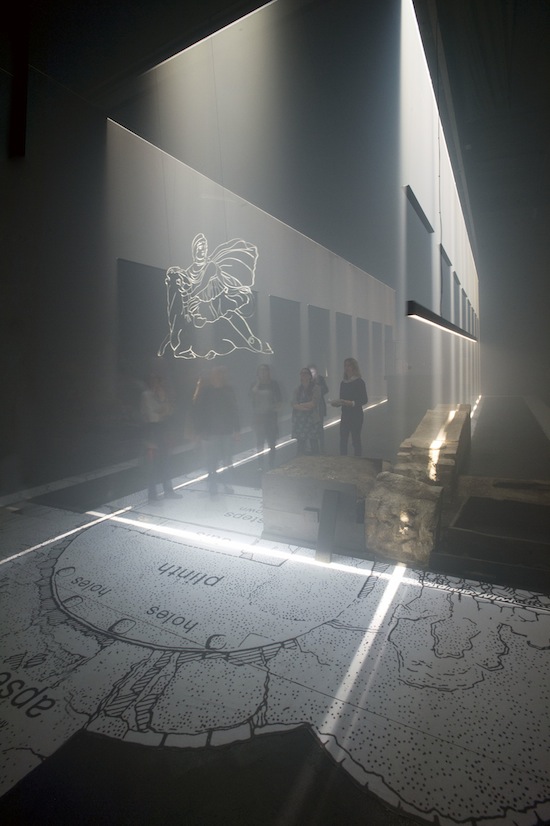
I wonder how much the cult of Mithras had to do with Alexander? It’s interesting to note that Mithras sports a phrygian cap, very similar to the one worn by the Macedonian.